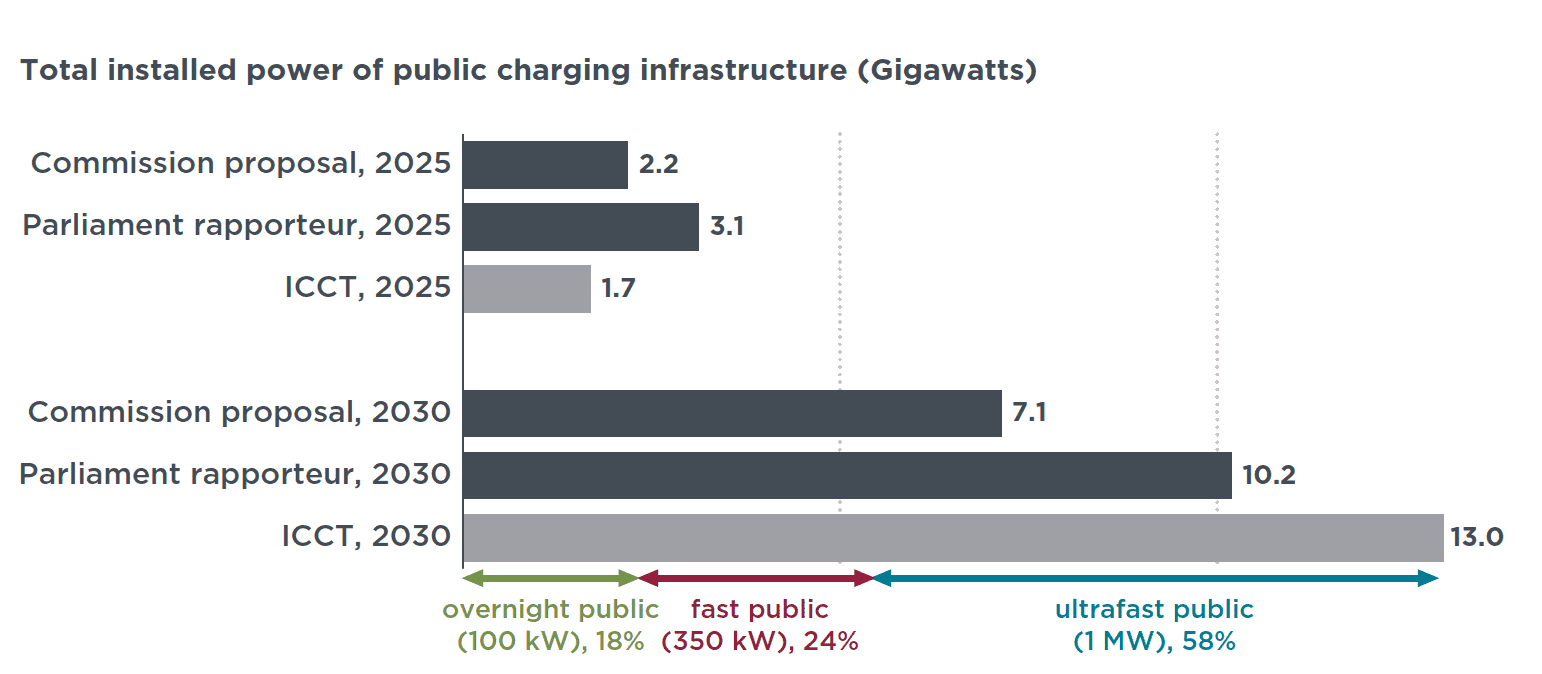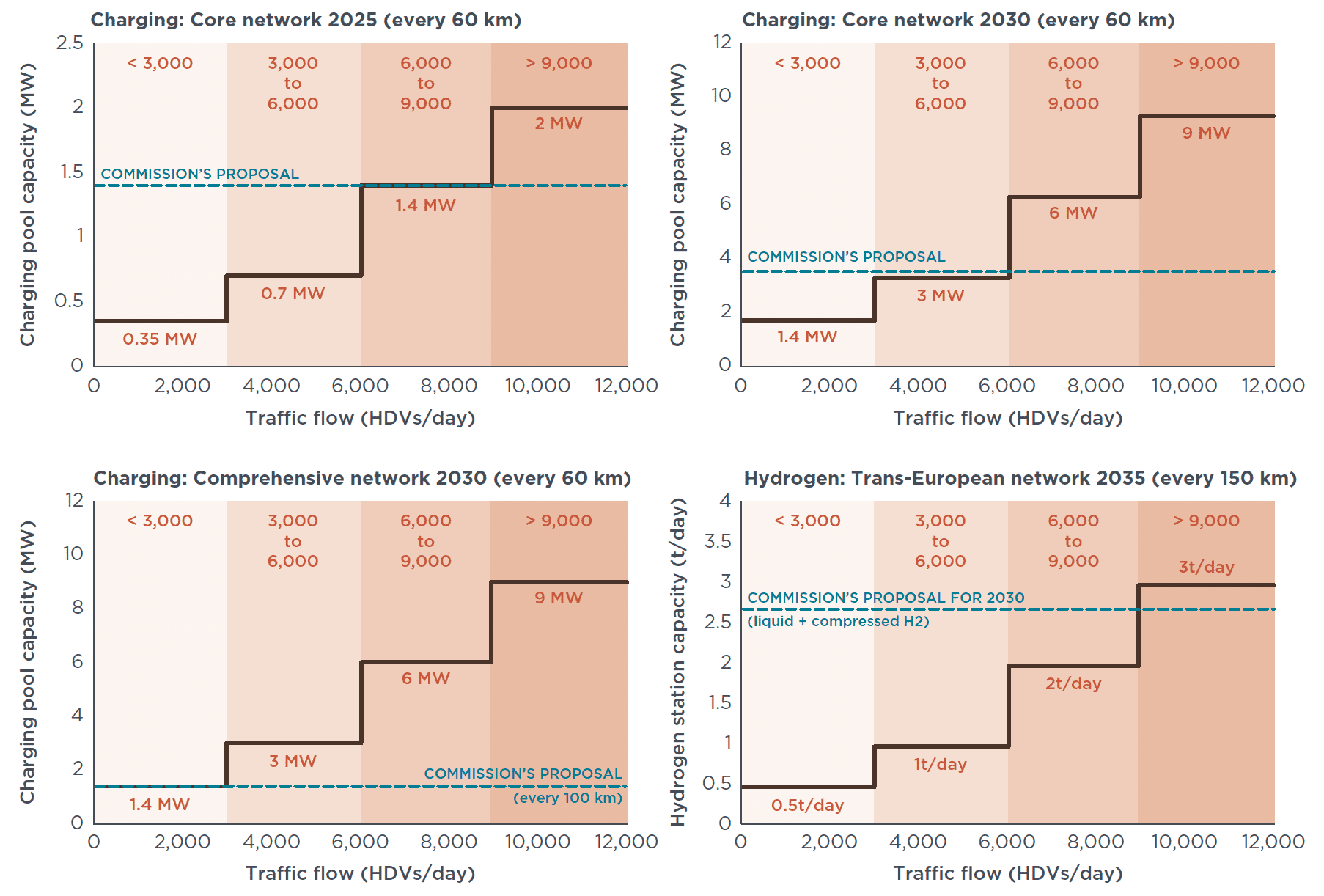Alternative fuels infrastructure in Europe: Electric trucks and buses can’t wait another decade
White paper
A review of the AFIR proposal: Public infrastructure needs to support the transition to a zero-emission truck fleet in the European Union
This white paper assesses the publicly accessible charging and refueling infrastructure required by zero-emission trucks in the European Union (EU) through 2030. The results are compared against targets put forward by the Alternative Fuel Infrastructure Regulation (AFIR) proposal of the European Commission. The proposed regulation sets targets for the minimum capacity and maximum distance between recharging and hydrogen refueling points along the Trans-European Network for Transport (TEN-T) to be met by Member States.
At the EU-27 level, the 2025 targets proposed in the AFIR are about 25% higher than we estimate is required to meet the projected public charging needs of the battery electric truck fleet. We do not consider this anticipation to be excessive, as early infrastructure rollout is critical to providing confidence to manufacturers and fleets in the early stages of electric truck adoption.
For 2030, our analysis indicates a need for about 80% more charging capacity than the AFIR proposal suggests. These overall results at the EU-27 level are summarized in the figure below.

Figure 1. Total required installed power as calculated by the ICCT and compared to targets proposed by the European Commission and by the European Parliament’s rapporteur
The techno-economic modeling of the electrification pathways suggests that battery-electric trucks will be the most cost-effective solution in the market for the majority of use cases. However, our analysis also shows that fuel-cell trucks may have the advantage in certain use cases featuring long range, high payload, and large day-to-day operating variability.
We find that the infrastructure roll-out must not be homogeneous across Member States, due to their large differences in traffic volumes, but instead should be targeted to locations where the need is greatest. We identify four levels of average truck traffic flow that serve to group corridors of the Trans-European Network, allowing for a more differentiated approach to target setting. We propose to adjust the AFIR targets so that the total installed power is consistent with the results of our modelling, while still providing the flexibility to deploy lower levels of infrastructure on low volume roads of the Trans-European. Our recommendations are outlined here and summarized in the Figure below:
- Increase the nominal 2025 charging pool target for the core network to 2,000 kW every 60 km, and add low-volume flexibilities as traffic flow allows.
- Align the 2030 charging pool targets for the core and comprehensive networks.
- Increase the nominal 2030 charging pool target for the core and comprehensive networks to 9,000 kW every 60 km, adding low traffic volume flexibilities.
- Increase the nominal capacity target for hydrogen refueling stations to 3 tonnes per day every 150 km, postponing its application until 2035, avoiding setting sub-targets for liquid or compressed hydrogen, and adding low-volume flexibilities.

Figure 2. ICCT’s proposal for traffic-based targets for the rollout of charging and hydrogen refueling infrastructure along the Trans-European Network for Transport, core and comprehensive networks.

